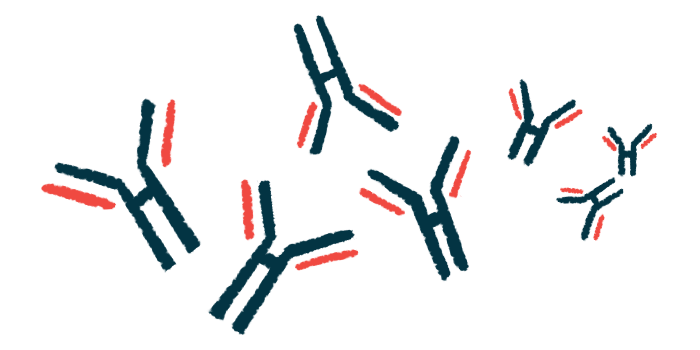Disease progression tied to early inflammation in Fabry
Small study links gene mutation to immune response pattern
Written by |

Inflammation, believed to be a secondary or late complication, may instead be an early and active driver of Fabry disease, according to data from a small study in Spain.
Researchers found ongoing immune activation and signs of inflammation in all patients, even in those with little buildup of the fatty molecules thought to be the main drivers of Fabry symptoms and organ damage.
Each patient’s disease-causing genetic mutation was also tied to a distinct pattern of immune responses, ranging from high antibody activity to milder but persistent signs of inflammation, suggesting possibilities for tailored treatment approaches.
“Inflammation might be a silent driver of Fabry disease, and understanding its role could help improve outcomes, offer earlier interventions, and guide the development of more targeted therapies in the future,” researchers wrote.
The study, “Systemic inflammation in Fabry disease: a longitudinal immuno-genetic analysis based on variant stratification,” was published in Therapeutic Advances in Rare Disease.
Inflammation ‘an underappreciated component’ of disease development
In Fabry disease, mutations in the GLA gene lead to a shortage of an enzyme called alpha-galactosidase A (alpha-Gal A), which normally breaks down a fatty molecule called globotriaosylceramide (Gb3). Without enough alpha-Gal A, Gb3 and its derivative lyso-Gb3 accumulate at toxic levels inside cells.
This buildup had been believed to be the main trigger of damage to organs like the heart, kidneys, brain, and digestive system, ultimately driving Fabry disease symptoms. Emerging evidence now suggests that inflammation may play an active role in disease progression, even in the early stages and in patients with low levels of Gb3 and lyso-Gb3.
“In this context, incorporating inflammatory and immunological biomarkers into the routine follow-up of Fabry patients could provide essential information for early risk stratification and personalized management,” the researchers wrote. “Despite increasing evidence, inflammation remains an underappreciated component in Fabry [disease development].”
The team retrospectively analyzed data from 11 people with Fabry disease belonging to three related families, each carrying a different mutation in the GLA gene. Seven carried the c.53dup mutation, three had the IVS4+1G>A variant, and one carried the c.845C>T mutation.
The group included men and women, ranging in age from their teens to their early 60s. All were followed for at least two years and had received enzyme replacement therapy (ERT), the standard treatment for Fabry that delivers a lab-made version of the missing alpha-Gal A enzyme.
Some patients showed significant kidney or heart involvement at the study’s start, while others had mild disease.
All patients, regardless of the mutation they carried, showed signs of chronic inflammation — even in cases with low lyso-Gb3 levels or little organ involvement at the start of follow-up.
The pattern of immune activation, however, varied depending on the mutation.
Patients with the c.53dup mutation showed involvement of several organs, especially the heart. They also had high levels of antibodies in their blood, including anti-ERT antibodies: IgM, the first type produced during an immune response, and IgG, the most common type responsible for longer-term defense.
In several cases, this antibody-driven immune activity was linked to immune-mediated complications, such as inflammation of the blood vessels (vasculitis), the pancreas (autoimmune pancreatitis), and the gut (inflammatory bowel disease).
“Although some of these diagnoses lacked complete histological confirmation, their frequency and clustering within a single family suggest an underlying immune predisposition,” the researchers wrote.
Those carrying the IVS4+1G>A variant showed mainly kidney and heart involvement. Their bloodwork revealed stronger inflammatory activity, especially high levels of complement proteins such as C3 and C4. The complement system normally helps fight infections and clear damaged cells, but when overactive it can damage healthy tissues.
The single patient with the c.845C>T mutation had mostly heart involvement, with mild but steady signs of inflammation, including raised C-reactive protein (CRP) and ferritin.
The findings show Fabry disease may involve different types of inflammation, each with its own treatment needs, the researchers said.
In the antibody-driven type (c.53dup), they pointed to B-cells — the white blood cells that make antibodies — as a possible treatment target. In the complement-driven type (IVS4+1G>A), the results suggest that patients might benefit from complement inhibitors. In the low-grade persistent type (c.845C>T), treatment might focus on anti-inflammatory strategies to protect the heart over the long term.
“Inflammation in Fabry disease should not be seen as a secondary or late complication but as a central and potentially modifiable axis of disease,” the researchers wrote, adding that recognizing its early role may “offers a pathway toward more personalized and effective management, advancing beyond enzyme replacement into the era of immunological precision medicine.”
The team said that while the findings need to be confirmed in larger studies, tracking biomarkers such as CRP, complement fractions, and antibody levels could support earlier risk stratification and more informed treatment decisions.






